Speeches Shim
Utility Scale Wind and Solar in Emerging Markets
An expert panel of private sector developers and investors discuss how to unlock the growing utility scale wind and solar market in the developing world.
49:47
Video Transcript
[Jennifer] Welcome everybody to the first Webinar in an installment of four, where we're gonna hear from the private sector and hear their perspective on a series of clean energy topics, the first being Utility Scale, Wind, and Solar in Emerging Markets, or the markets that we work in. To get us started, I wanted to give a little bit of an overview of the electricity sector right now and investment in that sector. And then we're going to move on to hearing from our panelists after that. As I said, this is the first in an installment of four webinars. And each webinar is going to focus on a different aspect of low carbon energy. Up next, we have Energy Efficiency. Following that, Smart Grids, and then following that, an Off Grid, and Mini Grid, and Microgrid Discussion. And you can see an email address for more information as we go. So perhaps to start us off, I can talk a little bit about the global context of energy investment. In 2017, there was almost two trillion dollars of investment in the energy sector, and of that, it was really led by electricity. That's why we're here talking about the electricity sector, or power sector here today. Of that investment, I think it's important to note that the type of technology and the regions that that investment is going into is shifting over time and we can actually see that here, illustrated that the investment is really shifting towards, or at least the proportion of investment, is shifting towards renewables, towards networks, and towards network flexibility, and this is why we're talking about this very important topic today. That shift also has happened quite a bit from investment in Europe to investment in Asia, of course with China and India leading on that, but we are seeing more investment also in Southeast Asia. And so these are regions where we certainly have an interest as USAID as these are developing markets. As we take a bigger picture look at that regional investment, of course we see that the overall proportion of investment in renewables is a majority of that. But, if you kinda look down in more detail into Southeast Asia and Sub-Saharan Africa, two of these emerging markets that we're focusing on, you can actually see that that's not true yet. So that proportion is not yet shifted towards renewables. And so, we wanted to hear a bit from the private sector about how we as USAID can support thinking about promoting more scale up and more investment in those sectors, in the regions that we work in. To that end, we partnered with the National Renewable Energy Laboratory, or NREL, to survey the private sectors, understand their perspectives, on both barriers and opportunities in clean energy investment in the markets that we work in. We had over 70 respondents for that recent survey and thanks to those of you who took that. And they were working in sectors from utility scale wind and solar to energy efficiency, DG, off-grid and smart grid technology, and we had everyone from CEO to presidents to managers responding to that. What we've found were some trends that really emerges to the top for our primary questions that we asked. When we asked the private sector about barriers to market entry in these developing and emerging markets, there were five very significant things that came up. The first was access to finance in these emerging markets. Next was the policy and incentive environment, so obviously something very important to USAID in the work that we do. Offtaker and customer ability to pay, or credit worthiness. Political instability, a lot of folks answered that that was the barrier to their investment in some of these places. And then permitting processes often are very complex or they're non-existent. To take a different look at that question, we asked about what are things that might improve the competitiveness or entry for these private companies into these emerging markets, to invest in utility scale wind and solar. So in converse, the renewable energy and energy efficiency in support of policies play a big role in the competitiveness of companies to invest. Local bank awareness and lending. Established interconnection processes, so were they easy to navigate and are very transparent? Having power purchase agreements or some kind of long term contract in place to reduce risk, and give some certainty. And access to more information about the market and the businesses that are operating in that space would be very helpful as well. So with that, we brought on three panelists, to talk about their experience and their perspective on investing in these emerging markets. We have Dean Baumgardner, who's the partner and chief development officer of Upepo Energy. And Upepo is focused on utility-scale renewables in Sub-Saharan Africa, and they have some experience working with USAID under Power Africa. We have Jim O'Brien, who works from the Global Energy, Mining and Infrastructure Practice at Baker & McKenzie, a law firm. And they consult major projects and infrastructure transactions both in power generation and with utilities. And finally, Suzanne Leta who runs Global Market Strategy for SunPower, who does manufacturing and project development and sales for utility-scale solar. With that, we are going to have each panelist provide us an overview of their company and the regions that they work in. And then we're going to move on to the panel questions. For now, I will turn it over to Dean.
[Dean] Thank you Jennifer. It's a pleasure to be with you today. So in 2005, after a 20 year career with a Mid-west utility, I co-founded Wind Capital Group with my business partner Tom Carnahan. We developed more than a thousand megawatts of wind plants that are now operating in the US. of particular note is a small 5 megawatt project listed here called Loess Hills. It provides the power for a village in Missouri called Rock Port. It was the first community in the US to generate 100 percent of its electrical needs from the wind. Post Rock is mentioned in Vice President Al Gore's second film on climate change. We subsequently sold the company and formed Upepo Energy in 2014, as Jennifer mentioned, to develop utility-scale renewables in Sub-Saharan Africa. Upepo by the way means wind in Swahili. We are a member of Power Africa and have worked closely with OPIC and received a grant through their African Clean Energy Fund for our early stage development work in Tanzania, where we have an office. More recently we've expanded into Ethiopia, Zambia, Malawi and Mozambique. In many countries across Africa, less than 20 percent of the people have electricity. Demand is growing by seven to eight percent each year, and most countries are heavily dependent on hydro. Not only do they need increased capacity, but reliability is a pervasive problem, with drought causing frequent power outages. Addressing these conditions is essential for economic development in emerging markets. There are quite a few companies working on small scale distributed energy through rooftop solar and micro-hydro installations. And these efforts can help bring some light bulbs to the villages, so kids can study. But they don't address the capacity and reliability issues necessary to promote industrial and business development that will create jobs and allow Sub-Saharan Africa to emerge into the world economy. This requires large utility-scale projects, and can be accomplished with renewable energy from wind and solar combined with battery storage. In Tanzania, we've been working on the Upepo Energy Center. It's a 300-megawatt plant that we plan to build in multiple stages. The project is located in the central part of the country along the Great Rift Valley Escarpment in the Singida Region. It has good highway and transmission access, along with a very robust wind resource with capacity factors exceeding 50 percent. In our projects, we work hard to engage the local villages. We feel successful projects don't happen unless they're wanted and people are comfortable with what is being proposed. That takes keeping all the stakeholders informed. The Upepo Energy Center extends across 25,000 acres and includes eight rural villages. We meet regularly with them to explain renewable energy, answer questions, and keep everyone updated on the progress. None of the villages have electricity or clean water. We thought it would be wonderful to be able to bring power to these folks. We thought it would be great to bring electricity and power to these communities. We quickly found out that their primary need was clean water. Separate from our energy development work, Upepo has drilled three bore holes with water storage tanks and solar pumps. Each well now serves more than 15,000 people, and they're the first sources of clean water in these villages. We believe this type of involvement with the local communities is essential for sustainability and long-term project success. Once the energy plant is operational, we also plan to allocate a percentage of revenue to a community development fund to address additional local needs, in education, healthcare, and reforestation. The feasibility study for the Upepo Energy Center is complete, and we're currently working with TANESCO, the national utility, on a memorandum of understanding, which we anticipate will lead to a power purchase agreement. But it has taken a long time to get to this point. Perhaps double or even triple the time the same project would have taken in the United States. New developers entering emerging markets need to be cautioned about slow and often bureaucratic processes, so they plan on realistic schedules and properly budget for extended development periods. Most of the delays are resulted from the utilities not being familiar with renewables, or having the processes and procedures in place to evaluate proposals. Upepo Energy is committed to working closely with USAID and other donor agencies to improve decision-making processes for countries and utilities in the emerging markets. These efforts will go a long way to breaking down barriers and will enable more companies to expand utility-scale renewables in emerging markets. Thank you.
[Jennifer] Great, I think we're going to move on to Jim now.
[Jim] Thank you. And thanks Dean, that's really exciting. That's a great project and you're really doing some great work. Hi everyone I'm Jim O'Brien. Thanks for the opportunity to spend time with you. I'm actually with Baker McKenzie, which is a large law firm. I put up a slide, a little bit about our firm. I head a group called Energy, Mining and Infrastructure, which is the group that really houses the lawyers that do this kind of work. We have 411 lawyers in our group. Our annual turnover for that group is about 295 million out of the firms three billion dollars revenues. You'll see on this slide we have about 6,000 lawyers, so it's a pretty good size shop. But actually about 83 percent of the lawyers are outside of the United States. We're actually North America which includes Mexico, so you'll see they're relatively broadly spread across the US, or across the world rather. In anticipation of this program, I spent some time talking with practitioners in the group, the 411 lawyers trying to assess where we were with current projects. So I just have a few slides on projects that we're currently working on and places where we're doing it. And I won't go obviously line by line because there's lots of lines. But you'll see that there's a lot going on around the world in renewables, particularly solar and wind, but also hydro, biomass, and also thermal which is an important part of the portfolio supply in many countries. At least as we see the trends and you'll see if you look at the slides, clearly there are interesting projects that are going on in Africa, just like Dean's project which is an exciting one. Programs in places like South Africa, but now a lot of the Asian countries are now becoming much more interested in renewables. There's a large offshore wind program in Taiwan that is currently underway with some five or six thousand megawatts of wind, that I think would be a very exciting. Those projects will I think really help with respect to development throughout the Asia jurisdictions. But that's just a little bit about us and the projects we're working on. Jennifer, back to you.
[Jennifer] Great, thank you Jim. And for our final panelist, we're going to push to Suzanne to hear about SunPower.
[Suzanne] Hi I'll just say a few words about SunPower. For those of you not familiar with the company, we are a solar technology and energy services provider. We serve all three major market segments: residential, commercial, and utility-scale power plants. We've been around for more than 30 years. We both manufacture solar energy technology, panels and other balances system, and deploy it around the world. We have a unique strategic partnership with Total, and they own 60 percent of our shares. We were one of the first clean energy companies that they made a, or probably the first clean energy company that they made a major investment in back in 2011. And we have, as many of you know I'm sure, a very large global footprint. What we're known for, in terms of our technology is very high-quality. So we have very high panel efficiency, record-breaking efficiency, for our back contact cells, and more than nine, it's actually almost 10 gigawatts deployed worldwide. We're at 9.9 technically, analysis is slightly outdated. Around the world we have done direct projects, utility-scale developments. We are moving forward, we're focused on product sales, both for distributed generation and utility-scale development. So selling our products to third party developers, sales and installation companies and distributors internationally. In North America and especially in the United States, we will continue to develop projects directly for commercial and industrial customers, mainly behind-the-meter. And then we have a very thriving business where we sell our residential products both directly to consumers, as well as mainly to local third party sales and installation companies. We do the same thing with small commercial. So that's a little bit about us. Around the world, we have offices and staff in Sub-Saharan Africa, in Europe, in Japan and Australia, and India and China. We're doing business very actively all over the world. We don't have staff physically present in the Middle East, but we do sell in the Middle East. And we're quite active in Southeast Asia. This is a bit about our unique technology. So there's really two main types of silicon panels. The first is back contact and that's our unique product that we're known for. We have very high efficiency but the other benefit of back contact cells is that they're very reliable and durable over time. So that's really great for applications in many emerging markets, where you have to trust that the technology, especially if it's in a more remote area where it's being relied upon for reliability purposes, whether it's a microgrid or off-grid or if you're in a space constrained. So if you're on a roof top, or if you've got land constraints, it's very, very effective. And for those types of applications, it's high efficiency product, very strong reliability and durability with a five-year performance and production warranty. And then although it's not pictured here, we have a different type of product which uses a front contact cell. Most of the solar technology companies in the market today utilize front contact cells. And we take, basically, other third party provider cells and we layer them. We shingle them in a unique way. And that's a different type of product called our P-series product. It has a bit lower efficiency. We're ramping up our P19 P-series product, which has a 19 percent efficiency, similar amount of reliability and durability, so it's better, typically, than other products and same warranty. And the benefit of that although it's at a lower efficiency, it's also at a lower price point. We sell that product around the world as well. Both our back contact and our front contact technology is being deployed. What we find is that when we decided to invest in the technology, we actually did so for the purposes of being able to further solar and international sales, especially in emerging markets where you need a really high-quality product, but at a bit of a lower price point. So a little bit about what our technology is and what we're known for. The other thing we do and while we haven't deployed it in the emerging market for commercial and residential, we do have it for utility-scale around the world is what we call Complete Solution. So most of the time when solar is being deployed, the panel manufacturer is different from the racking manufacturer, which is different from the inverter, which is different from the monitoring system, right? So you've got all these mixed pieces. The installer is doing the best they can to put all those pieces together and make the system work and have it meet the performance standards that the offtaker is expecting. We're unique in that we have a product called Oasis in the utility scale market. It's called Helix and Equinox for commercial and residential, but I'll just focus on utility scale where we basically sell it in a power block. The customer is getting the panel as well as the tracking system and the cleaning, actual robotic cleaning system if necessary. Remote monitoring, it comes with site optimization so it's really easy to actually design a site with this type of technology. And we provide design support for our customers around the world. And the trackers our ours. And then we actually warranty the whole thing as a wrap. So it's easier to install. It's easier to design and it's got a really high-quality. We find that, especially combined with our P-series technology for utility-scale applications has been quite successful. We learned how to do that from our utility-scale development historically. And then finally, we do offer a similar product for commercial and residential markets, but we're right now focused on the United States. So it's an amazing product. I actually have the Equinox system on my home. We over time will likely certify that for sales around the world. We're currently around the world, outside of the United States mainly, we're selling just our panels. I feel like I talked a lot about SunPower versus the questions about utility-scale development. What I do within SunPower is I help grow markets. So I help policy makers and elected officials and regulatory bodies really understand the tools that are required and the challenges to grow solar and make it more accessible and affordable to everybody. There is such a great need internationally for it. Between myself and the rest of our 7,000 employees at SunPower, we're happy to help. I'm happy to answer questions about how to make that work in other markets around the world and looking forward to the discussion.
[Jennifer] Great, thank you Suzanne. That was really interesting. I think we have a really diverse set of panelists with different perspectives. I'm very excited to hear from you guys. A few questions that I've come up with to get the conversation started. I think the first thing, I wanted to reflect back on the survey that we did of the private sector actors in the utility-scale space. And a few things that bubbled up were that the policy environment and access to finance were some of the top barriers to market entry. I'm wondering if we can hear from you on perhaps the specific barrier that you are currently experiencing or have experienced in the regions that you work in and perhaps, how you overcame that to get a little bit of perspective to your work. Maybe we can start by hearing from Dean, initially, on that question and then go through through the panel.
[Dean] Okay, thanks Jennifer. I think I'll touch base on finance and capital first. Early stage capital for development is always challenging. A small company like ours can only internally fund maybe a couple of projects at a time. Support from sources like USTDA, forgivable grants and Africa Clean Energy Fund go a long way to helping us expand our work. As for financing, money is available once a project reaches that magic power purchase agreement phase. It is with the caveat that sovereign guarantees are always the elephant in the room when working with emerging market governments. Conventional financing generally isn't possible without guarantees since many of the utilities in emerging markets have earned reputations of not paying their bills. It's getting better with World Bank and the African Development Bank helping utilities to restructure debt and improve management practices. Personally we try to avoid using the word guarantee, and instead talk about such things as put options where the government agrees to buy the project if payments aren't made by the utility. It's a bit more palatable since the country would end up owning a producing asset. Getting OPIC, and AFDB, and World Bank involved in the financing also helps mitigate some of the guarantee requirements imposed by the international banks. I'd add here the lack of procedures to evaluate proposals as well as just the lack of knowledge about renewable energy. Most of the countries want private investments and they know they need more energy. Related to this is the need to provide education and help government ministries with renewable energy friendly policy, procedures and regulations like standardizing PPAs, coming up with understandable land use regulations and road permitting. I'd like to give you a good example of something we are experiencing in Tanzania right now where building a wind farm requires truck transportation of very heavy components like towers, nacelles, and blades. This requires getting road permits to assure the highway department and ministries that the weight of the equipment will not damage the roads. In the US country and European countries, the cost of road permits is based on axle weight. A typical semi truck is five axles and 18 wheels. The weight on the road typically averages about four tons per axle. Transport for wind turbines, however, can have up to 14 axles and 54 tires. Axle weight, which correlates to the impact on the road is the same whether it's a 20-ton 18 wheeler or a 60-ton wind power transport. However, in Tanzania, road permits are based on total weight rather than axle weight. We are trying to get this regulation changed or at least waved because the unnecessary road penalties we are facing are more than thirty million dollars. Under the current regulation these unnecessary penalties would need to get factored into the power price, which in effect is an indirect tax on the people of Tanzania and will make the country less competitive in the world economy due to higher energy costs. We have encountered many examples of these types of antiquated or misguided policies. Often I think the governments would like to address these problems, but they don't even know they are issues or even how to fix them. There is a steep learning curve that only time will take to address. I should note that things weren't all that different in the US a decade ago when we first started introducing utility-scale wind. The countries in emerging markets don't have to reinvent the wheel. There is much that can be borrowed from the US and European experiences.
[Jennifer] Thank Dean. I'm wondering, Jim or Suzanne, if you have any perspectives on this that are perhaps similar to what Dean has said about the need for guarantees or about other challenges related to the policy environment that you've been experiencing as you are trying to develop some of these projects or provide advisory services to your clients.
[Jim] Sure, I can add just quickly and then I'm sure Suzanne may want to add as well. In addition to Dean's comments taken around financing and government guarantees, the other part that I think that from our perspective as lawyers, is that the project needs to be, as we call it, well-structured. People use those words in kind of a lot of different ways. One of course is to have a credit with the offtaker. The second way, and probably it carries the same kind of nuance, as Dean's example about trucks going over roads. That the arrangements need to allocate the proper risk to the sponsor or owner of the power project. What I mean by that, is that the competency of a project developer is really what's in the four corners of the fence that goes around the project. The developer knows how to permit it, knows how to build it, knows how to operate it properly and make money, but it's all with really the four corners of that fence to the extent that the arrangements in the particular country start to impose other risks on the developer. For example, interruption of gas supplies so that even if gas supplies are interrupted, the power project is supposed to deliver energy or would be otherwise penalized, then it starts to turn into a project that is not very well-structured. There's lots of words for that, bankability being another one that people typically use. It's really meant to say that the expertise of folks like Dean is actually along the lines of developing, permitting, constructing and operating projects. To the extent you go beyond that, those are risks that are hard for the developer to take and end up with unbankable projects. Suzanne, do you want to add anything?
[Suzanne] Yeah, I can speak a little bit about the pricing and contract environment. I think that's been spoken to quite a bit but I would say just a couple of other things, which is it can be very important, given currency risk, to have the price be in USD. I know that's probably obvious to many of you, but it's not always the case. And then the other thing is if you want to encourage higher quality projects, you really should have strong performance standards and warranty standards and quality standards. I think that all too often we see auctions just really getting to the kinda bottom line price. I recognize that we want to make utility-scale development accessible and affordable to the vast majority, as many people as we can. But sometimes that results in one or two things, sometimes both. The first being projects that frankly are not as economically feasible and will never get built. I'm concerned about that with some of the very low auction prices that we've seen in some markets recently, including in the most recent auction prices in Mexico for example. And then the other concern is that the quality of the materials and the installation might not be very good. While you do want to set up a system that encourages pricing that is cost effective, you want to set other parameters up such that the project will; A: actually come to fruition, and B: be in operation and produce at the level they are expected to produce over, ideally, more than the life of the contract term. One other thing related to that is the longer the contract terms, the better from our perspective.
[Jennifer] That's great. USAID does quite a bit of work in auctions. I think that's a great kind of perspective to add to that. Just because we see these low prices doesn't necessarily mean the projects will get built. Perhaps I'm going to skip around a little bit in my questions and hit this question back to you, Suzanne. We do see an evolution in many countries from FITs, from feed-in-tariffs, towards competitive procurement through processes like auction or auction schemes. And so has that impacted the way that you develop projects? Or has it impacted the way that you see projects being developed, or are you changing your tendency towards one scheme or another in terms of projects that you do want to see built?
[Suzanne] I would say, in general, it's tough in auction-based markets. That doesn't mean that a feed-in-tariff is necessarily the right approach moving forward. There's lots of other strategies that can be utilized beyond just auctions. I think, in general, it can be very tough, not only for developers to compete in auction-based markets, but for high-quality panel and product providers to compete with our products, to sell those products eventually to those developers because there is just certain markets where we're just priced out, period. You're not going to get high-quality products. I'm just being very frank about that. So I think it's important to recognize that there are some limitations with respect to relying on auctions to drive utility-scale development. What I think we've seen that has been a bit more successful and has resulted in pricing environments that are both competitive and encourage projects that will actually come to fruition is more of RFP-based approaches where you have a mix of requirements that result in a procurement, not just a price-based requirement. And they're, in turn, very focused on what is the sort of the true levelized cost of energy with the right production guarantees. That's one comment. You can do that in a lot of ways. You can do that with utility procurement. You can allow for third party C&I procurements both on and off site. I think those can be very successful. Frankly, I would love to see more markets be opened up to commercial and industrial customers and be able to procure directly, both on and off site. I would emphasize on site in particular. So it would be great to see more net energy metering policies in place. If you can do net energy metering with no system size cap, for example, which would allow for a grid-connected project that could be ground mount or a combination of ground mount and rooftop or carport that is large enough to accommodate a C&I customer's needs because a lot of those C&I customers in emerging markets actually have a lot of land that they would love to utilize. I would say a combination of those behind-the-meter policies as well as policies that encourage access to offsite renewables for large customers would be great. And then you can use the same approach even for new developments, like new communities, for example, that have a mix of residential and commercial development. Those are just a couple thoughts.
[Jennifer] That's great and I think some really important points to get across to the folks working in country at our USAID missions. Dean or Jim, I'm wondering if you have any comments related to the evolution from FIT view auctions or competitive procurement in terms of the advisory services that you're providing clients or in terms of your experience in developing any of these projects in Tanzania.
[Dean] Sure, this is Dean, I'll just make a few comments. Upepo Energy is really agnostic as to whether a country uses an auction, tender offer, or direct negotiations. We develop projects to meet lending standards and it doesn't really matter what procurement approach a country or utility is taking. It has been frustrating in Tanzania however, because the utility can't decide which approach it wants to use. It has gone back and forth repeatedly over the past two years. We just want to know what approach it's going to use because we're confident that we could be competitive. Also, if competitive bidding is used there needs to be a level-playing field. In another African country we participated in a tender offer where the qualifying criteria were so narrowly written that it turned out that only one Chinese company could check all the boxes. We're pretty sure that utility knew from the beginning what company it wanted to award the project to and did the tendering only for show. We all need to work towards promoting fair and clear approaches to energy development.
[Jim] Yeah, and Jennifer, it's Jim, I'd add, one thing that I think some of the folks on the phone who are in the Power Africa program may already know, but one program that we think has been really spectacularly successful has been South African REIPPP program, which is along the lines of what Suzanne was speaking about. It's not really an auction, you submit responses to an RFP, and then the government awards the projects typically based on price. But what's been interesting, and again as many of you already know so I'm telling you something I'm sure you're aware of, but when you go through the various rounds of the RFP process, one is that they've ended up with 7,000 megawatts of renewable energy so that's a terrific story there, but as they started off the first round the requirements for the RFP response were really tight. So just as Dean said only a few projects could qualify because they required the projects be highly developed. There the average round one energy price is around 25 cents per kilowatt hour. As rounds went forward, they were able to look carefully at what the requirements were in, and so while the projects have to be legitimate and credible and able to be built they didn't have to be as fully developed as the round one projects were, and so by round four the average price was down to say six cents. But nevertheless along each step of the way they're getting good projects that will eventually get built. I think that as we think about the difference between the South African's RFP program versus an auction program is that on the South African side really the project, because of the requirements of the RFP the program is very transparent. It's in a market where there is capital available locally and from IFIs that typically participate in the projects, and the documents there and the structures used are internationally acceptable, so it's really state-of-the-art technology that deals with the risk allocation in a way that allows these projects to get financed.
[Jennifer] That's great, all salient points. I'm wondering, while we have you still speaking Jim, if there are any new opportunities, whether it's region or technology or otherwise, that you're seeing that are emerging since it looks like you work across the entire globe. You're in many different markets, both developed and developing. Do you see any new emerging opportunities in these markets that USAID works in to expand utility-scale business offerings?
[Jim] Yeah, two I'd point to. One is sort of a program and the second then is to point to a particular country. Many of you probably know the World Bank has something called the Scaling Solar program, which they have rolled out right now in four African countries in which they help with respect to a tendering process. Have documents that are template documents that meet international standards that will bring in their partner agencies including frankly Power Africa as well to provide competitive financing, and then provide access to proper political risk insurance. Actually the four countries are Zambia, Senegal, Madagascar, and Ethiopia. I know a lot of our clients are very excited about those programs, and the round one pricing in Zambia has been very very competitive. They've got pricing along the lines of a little over seven cents a kilowatt hour, which on a non-index basis is roughly around five cents, so that really is as competitive as in some emerging markets. The other one I'd just point to that I think is particularly exciting, and it's one that we're working on right now and it's actually for the government of Fiji. The idea is Fiji isn't just one place. It's some 200 islands, and it's really not practical to say, "Well, we'll hook up all "with transmission lines." Instead you need to worry about island by island, and most of the islands right now have no access to electricity at all. So what's happened is we're working with a donor fund, actually a foundation, that is sort of staking the construction of solar PV facilities along with battery storage so you do get energy from solar, you get battery to cover the intermittency of solar. That doesn't happen all day, but it's frankly a lot more than the islands have now. And the idea will be that the, in fact I think the first of the installations are going in now. And as that energy is actually being paid for by the residents of that island, the money actually goes into a fund, and then is used to buy panels and batteries for the next island. So I think the first islands cover maybe eight or 10, and then with the expectation that it will probably take a year's of worth of payments to roll out to the next eight or 10, and then keep on down the line. And I know at the moment we're trying to attract other donors that might be able to expand the initial one and roll out it across, but it's really meant to show how we can use solar, together with battery storage covering the intermittency during the time when they actually need it during the day, in a way that gets its utility-scale because it's as much electricity as the island needs, but does it in a practical way.
[Jennifer] That's great. Suzanne or Dean any opportunities, whether its technologies or regions or otherwise, that you see coming down the line in these emerging markets?
[Dean] This is Dean. I don't have a lot to add there. I think Jim covered it very well. I think just as governments and utilities become more familiar with utilities, and improve their processes and speed up the development process, it'll open up the ability for more companies to enter these emerging markets.
[Suzanne] I think my comment is less about other markets, which I'm happy to speak to in terms of what I see as emerging, but another barrier that I just want to emphasize, since it's on my mind, is interconnection. I think all too often with projects, even those that are very large utility-scale resulting from auctions or procurement, but especially the case when it's more behind the meter systems even large behind-the-meter systems, take forever to interconnect to the grid. And the interconnection standards are not well-defined, and there's no timelines required of the utilities, and it's a huge problem. So that's the other thing that I think people don't realize and it's different than permitting, but it's just simply being able to be confident that you can interconnect to the utility and it won't cost you an arm and a leg, and it'll be done in a reasonable timeframe. So that's just one other comment that I want to stress to this group. And then as far as other international markets. I think I would like to see USAID and NREL and Power Africa in particular focus more on the opportunity for distributed generation, so in many ways tackling utility-scale development is easier than growing a distributed generation market even though people, both residential customers and commercial and industrial customers, they want the ability to self consume. And solar in particular is becoming so competitive that it can be at parity with the grid price in many many emerging markets, and emerging markets in particular because the grid price is high. So more access to distributed generation, including policies like net energy metering, incentives for the types of systems if it's needed, interconnection standards, simplifying code requirements. Those types of details matter, and I'd love to see a little more focus on that.
[Jennifer] That's great and I'll be excited to tell you that USAID is launching a partnership with NREL on distributed generation this year so we can chat more about that later.
[Suzanne] Excellent.
[Jennifer] Yes, great news. In that I think that you kicked off a great question here, and I see folks in the audience also asking it. Really what are some of the things you've gained out of either partnering with, whether it's USAID or other donor agencies or Power Africa or otherwise, in the past? What's been most useful? And are there other things that you think would be really useful from donors or in collaboration with donors such as USAID or other organizations as that. And Suzanne I think we heard from you an area that you think we should expand into working more in so maybe we can hop over to James or Dean to comment on that.
[Dean] Okay, you know as I mentioned Upepo Energy is a member of Power Africa, and we stay in regular contact with our liaison there. Meeting at least quarterly. Also in all the countries that we're working we try to keep the embassy staff, which are generally USAID people, informed about our projects and the progress. They have often been able to help suggest ministries and individuals that we should be meeting with and engaging with in those countries. I'd also like to highlight a service that has been of a particular help. This past year, and I'm not sure whether it was funded by Power Africa or USAID, let's just say the US, funded a consultant from Tetra Tech that was embedded with the Tanzania utility. He was able to work with the management and engineers on a daily basis to help them improve operations, improve decision-making processes, and understand renewables. We saw TANESCO take major leaps forward under this approach and I encourage more of this type of support for utilities in emerging markets. USAID also provided funding to help TANESCO bring in an experienced independent consultant to evaluate our project. The consultant helped TANESCO accomplish in a few weeks what I bet would have taken the utility years to do otherwise. They made site visits and conducted due diligence on our studies, and knew what to look for and what was important to assure a properly planned and reliable renewable energy facility. So decision-making by countries in emerging markets can be greatly enhanced and expedited by this type of support from USAID.
[Jim] Jennifer one is, I do think the USTDA grants for project development that I think Dean mentioned before can be very helpful. I mean the initial development capital is always the hardest and most expensive, and frankly most at risk in order to develop these projects, and so having some support around development costs really is very, very helpful. I think a second thing certainly, and it's probably reflected in Dean's comments about Power Africa, one of the things that we've seen is that Power Africa has taken a very commercial approach to the development of power, so there's lots of issues of course that we've been touching on, but they've even included and embedded transaction specialists who are really there to try and facilitate getting the transaction done in a particular place, and looking at how you match together lenders and the government and the developer, and trying to help each of the different parties understand what's the right risk allocation for a transaction. I think that's been a particularly helpful thing. Whether it's Dean's example with the utility or in helping the government understand there's just certain risks that developers can't take and we need to find a way to allocate those properly.
[Jennifer] And anything else that you wanted to add, Suzanne, on partnerships that you've had with donor organizations or things that might be more helpful to you as you're navigating the emerging market space?
[Suzanne] The more that we can work on educating and engaging decision-makers and local installers to help grow their business, I'm just thinking specifically in the DG market would be pretty valuable. I mean there's sort of a lack of knowledge, but yet a very strong demand, I think, from local companies that would like to get into the market, and so getting the enabling policy right in partnership with working with a lot of those companies so they can get up to speed and have successful, reliable installation would be a good next step.
[Jennifer] That's great thank you. I think we are at the end of our hour which means we did not get to everybody's questions and I apologize for that. And first, before we end, I wanted to thank our panelists. It was great to hear your insights and to have your participation. This is a great opportunity for USAID staff, both in Washington and in the field to hear directly from you and how we can support the private sector accessing these markets in a transparent and fair way, so that we can help support the scale-up of clean and reliable power to countries that we work with. Everybody, please have a great afternoon. Thank you.
More Videos
November 13, 2020
November 9, 2020

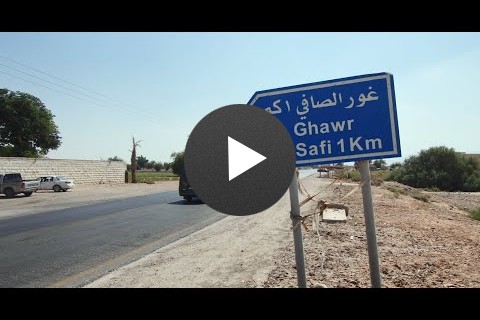
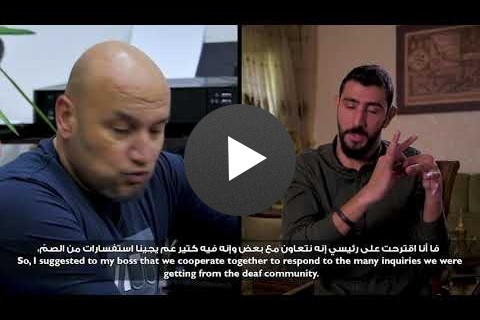
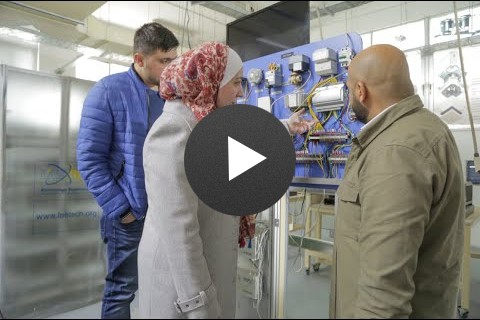
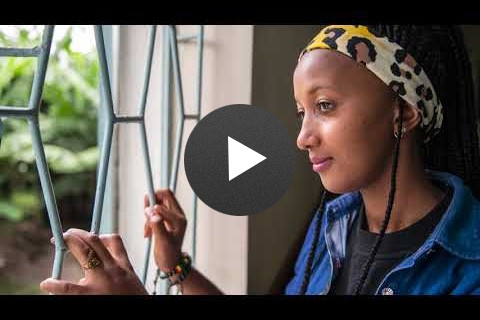
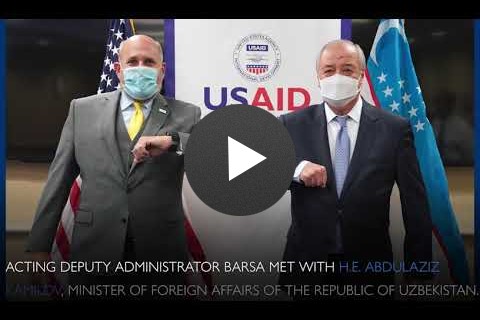
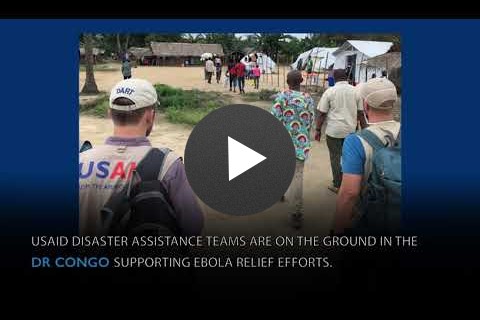
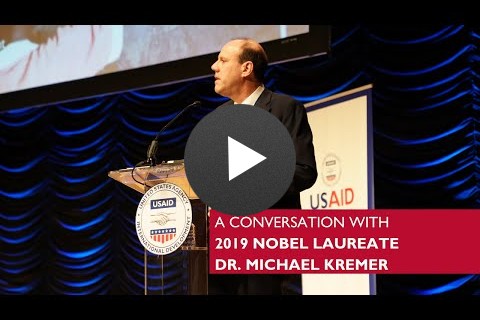
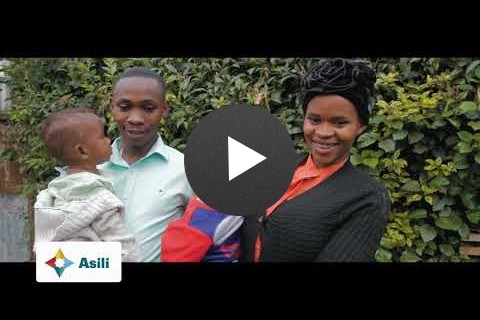
Comment
Make a general inquiry or suggest an improvement.